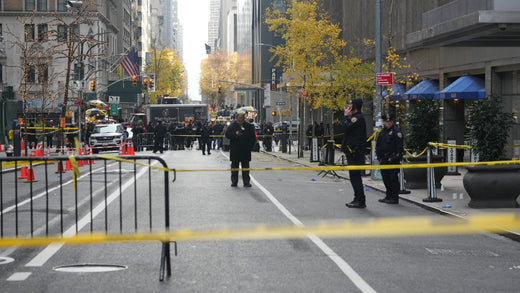In light of recent events involving corporate executives' safety, understanding personal security has never been more crucial. Scott Holzschuh, founder of Drogue Inc. and a former Marine Corps veteran with extensive experience in executive protection and global security, shares vital insights on protecting yourself and others in today's uncertain world.
1. The Wake-Up Call: Understanding Modern Security Threats
The recent incident involving the United Healthcare CEO serves as a sobering reminder of the vulnerabilities faced by executives. Despite receiving multiple threats, many high-profile individuals often dismiss them with a "not me" mentality. This complacency can prove fatal, as demonstrated by this tragic event where an assailant waited outside the CEO's hotel and attacked him during his morning routine.
2. Situational Awareness and Risk Mitigation
The cornerstone of personal security lies in situational awareness. Key practices include:
-
Scanning your environment when exiting buildings
-
Making deliberate eye contact with suspicious individuals
-
Trusting your instincts when something feels wrong
-
Avoiding distractions like mobile phones in public spaces
-
Being conscious of who's paying unusual attention to you or your surroundings
3. Professional Protection Strategies
For high-risk individuals, professional protection teams employ specific tactics:
-
Using two-person teams for executive protection
-
Conducting advance surveillance of exit routes
-
Maintaining strategic positioning to identify potential threats
-
Establishing eye contact with suspicious individuals to demonstrate awareness
-
Breaking potential attackers' plans through visible security presence
4. The Danger of Predictable Patterns
Creating predictable patterns makes you an easy target. Common vulnerabilities include:
-
Following the same daily route to work
-
Visiting the same coffee shops at consistent times
-
Using the same entrance/exit points
-
Maintaining predictable lunch schedules
-
Following rigid daily routines
5. Modern Surveillance Threats
Contemporary security concerns now include technological threats:
-
GPS tracking devices on vehicles
-
Air tags planted by service personnel
-
Hidden cameras in hotel rooms, especially overseas
-
Surveillance equipment in residential properties
-
Drone-based monitoring of private spaces
6. Parking Lot Safety Strategies
Public parking areas present unique risks. Essential safety practices include:
-
Walking in adjacent rows to approach your vehicle
-
Checking under and around your vehicle from a distance
-
Being cautious with automatic door unlocking systems
-
Scanning the surroundings before approaching your car
-
Watching for suspicious individuals near your vehicle
7. Building Exit Safety Protocols
Proper building exit procedures can prevent attacks:
-
Looking left and right before proceeding
-
Making eye contact with nearby individuals
-
Being willing to return inside if something feels wrong
-
Avoiding distractions during exits
-
Maintaining awareness of your immediate surroundings
8. Home Security Fundamentals
Basic home security can be enhanced through:
-
Reinforced doors with additional deadlocks
-
Floor bolts connected to concrete foundations
-
Creating multiple barriers for entry points
-
Installing security systems
-
Implementing layered security measures
9. Personal Defense and Executive Security Considerations
When considering personal defense options:
-
Obtain proper firearms training if legally carrying
-
Maintain regular practice and stress training
-
Consider practical alternatives to body armor
-
Use defensive tools appropriate to your threat level
-
Focus on training and proficiency over equipment
10. Travel Security and Space Safety
When in public spaces, practice these safety measures:
-
Identify all available exits upon entering
-
Choose seating with good visibility and escape routes
-
Monitor suspicious behavior from other patrons
-
Plan potential response routes for emergencies
-
Maintain awareness without becoming paranoid
The key takeaway from security expert Holzschuh, is clear: while you shouldn't live in fear, being prepared and aware can make the difference between safety and vulnerability. The goal isn't to become paranoid but to develop a mindset of preparedness that becomes second nature. If you would like to learn more about executive protection read our comprehensive guide.
